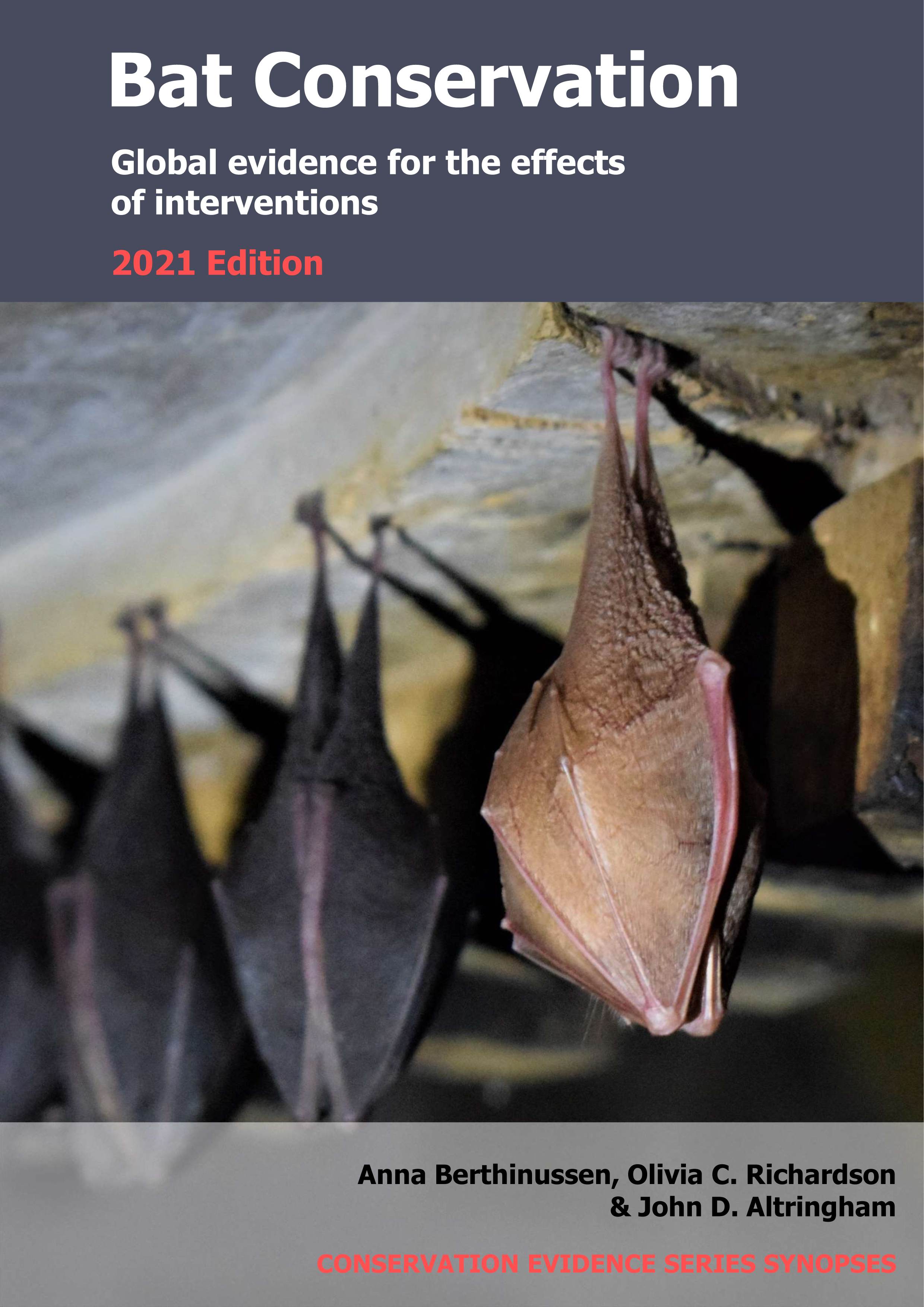Use low intensity lighting
-
Overall effectiveness category Likely to be beneficial
-
Number of studies: 3
View assessment score
Hide assessment score
How is the evidence assessed?
-
Effectiveness
65% -
Certainty
50% -
Harms
5%
Study locations
Supporting evidence from individual studies
A replicated, controlled study in 2000 at two bat roosts within buildings in Aberdeenshire, UK (Downs et al 2003) found that reducing the intensity of red light by adding 2–3 filters resulted in more soprano pipistrelles Pipistrellus pygmaeus emerging from the roosts than when only one filter was used. More soprano pipistrelles emerged from both roosts when red lights had two (73 and 72 bats) or three filters (76 and 127 bats) placed over them than when only one filter was used (35 and 26 bats). Over four nights in July–August 2000, each of two roosts were surveyed for one night with no lighting and for one night with red light of different intensities. A hand-held halogen light with 1–3 red filters was placed within 3–5 m of each of the two roosts. The number of filters (1–3) used on the red lights were rotated in a random order and changed every 30 seconds. On each of four nights, the number of bats emerging per 30 second interval was counted at dusk.
Study and other actions testedA replicated, randomized, controlled study in 2009 of 10 hedges in southwest England and Wales, UK (Stone et al 2012) found that reducing the intensity of street lights along hedges resulted in higher activity of lesser horseshoe bats Rhinolophus hipposideros but had no effect on the activity of Myotis species. For lesser horseshoe bats, activity was higher when hedges were lit with low intensity lights (average 37 bat passes/night) and medium intensity lights (22 bat passes/night) than with high intensity lights (5 bat passes/night). For Myotis spp. there was no significant difference in activity between low, medium, and high intensity lights (average 5 bat passes/night for each). Hedges were illuminated with LED street lights (24 x 2.4 watt high power LED’s). At each of 10 sites, two bat detectors recorded activity in May–August 2009 for six nights with each of five treatments: a silent unlit control treatment, a noise treatment repeated twice (with the generator powering the lights) and three lit treatments in a randomized order of low (3.6 lux), medium (6.6 lux) and high intensity (49.8 lux).
Study and other actions testedA replicated, randomized, controlled study in 2015 at 21 road sites in Hertfordshire, UK (Rowse et al 2018) found that street lights dimmed to an intensity of 25% had higher activity of Myotis spp. but lower activity of common pipistrelles Pipistrellus pipistrellus than street lights dimmed to 50% or left undimmed. A greater number of Myotis spp. passes were recorded at street lights dimmed to 25% than at street lights dimmed to 50% or left undimmed (data reported as statistical model results). Fewer common pipistrelle passes were recorded at street lights dimmed to 25% than at street lights dimmed to 50% or left undimmed. The activity of Myotis spp. and common pipistrelles did not differ between street lights dimmed to 25% and unlit controls. Each of 21 sites had three lighting columns (10 m high lamp posts with neutral light-emitting diode (LED) lights) along a stretch of treelined road. Each of four lighting treatments (controlled using pulse modulation) was applied for two consecutive nights/site in May–August 2015: 0% (unlit), 25% (average 11 lux), 50% (average 20 lux), undimmed (average 36 lux). Bat activity was recorded with a bat detector attached to the middle lighting column.
Study and other actions tested
Where has this evidence come from?
List of journals searched by synopsis
All the journals searched for all synopses
This Action forms part of the Action Synopsis:
Bat Conservation
Bat Conservation - Published 2021
Update 2020





)_2023.JPG)














